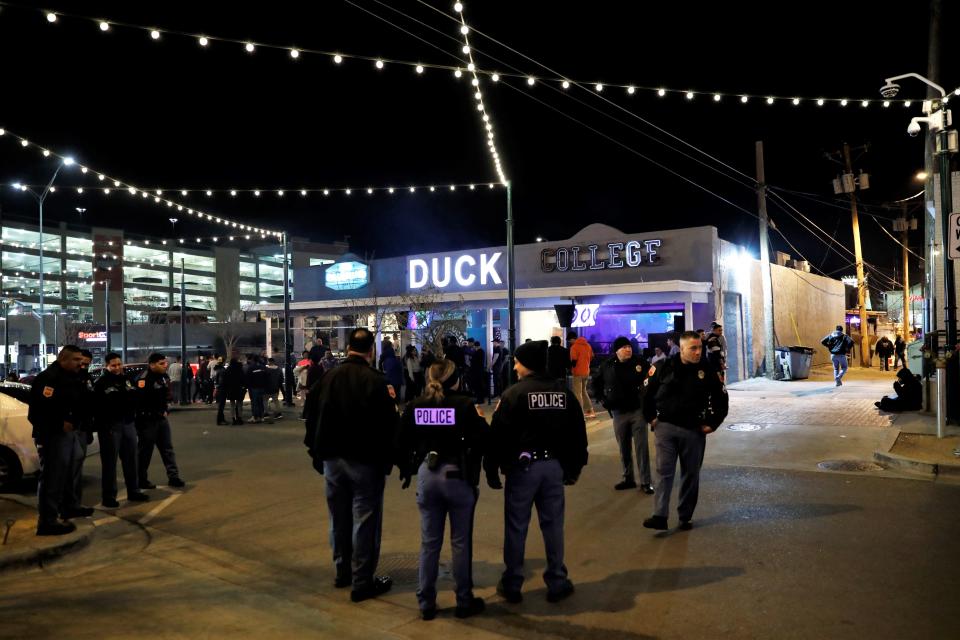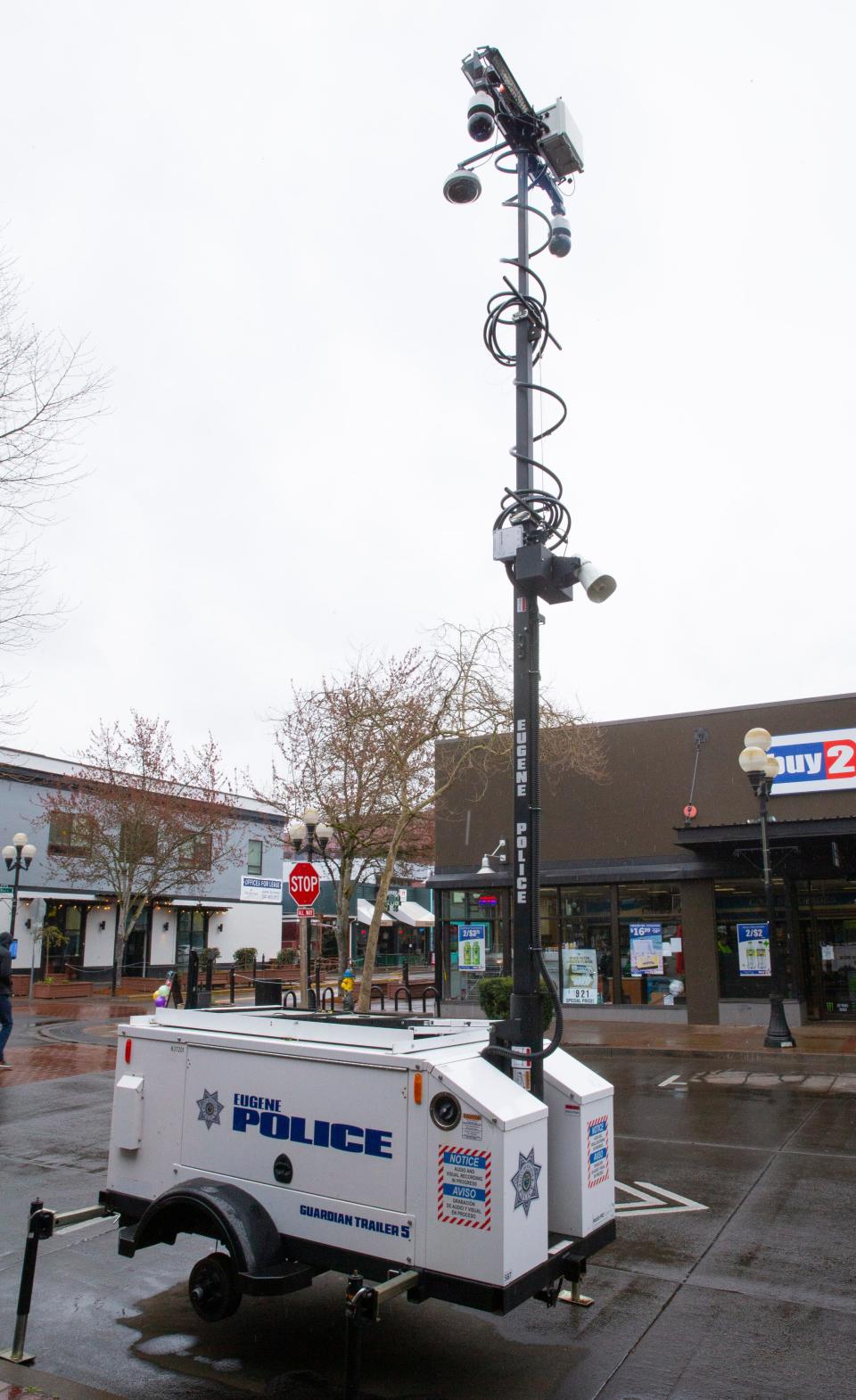El Paso police video surveillance system adding 300 cameras in $7 million expansion
An El Paso police video surveillance network is undergoing a $7 million expansion that will add 300 cameras at nightlife districts, some parks and city buildings.
The installation of new high-resolution cameras is scheduled to start next month as part of the El Paso City Watch Program, which seven years ago began with two dozen cameras, according to a project update presented at Tuesday's City Council meeting.
The program expansion has been in planning and development stages since it was approved by City Council nearly a year ago. Funding is coming from the federal American Rescue Plan Act, city officials said.
The cameras filming in public locations enhance public safety, improve first-responder efficiency and augment criminal investigations, Assistant Police Chief Humberto Talamantes told the council.
Major cities around the world have similar camera networks, including London, New York and across the border in Juárez with its Plataforma Centinela, or Sentinel Platform, a mega-scale video vigilance system to be based in a downtown tower that will be made up of 7,800 cameras, 1,700 license-plate readers and 70 drones.

In El Paso, some of the new cameras will record on a fixed spot while others can pan, tilt and zoom in for a closer view. The program includes aerial drones. There also will be pole-mounted cameras on mobile platforms that can be set up at various locations as needed, including festivals, marathons, parades and other large events.
Election 2023: Early voting kicks off in El Paso charter election, school board races
The camera installations, being done in six groups, are scheduled to be completed by October 2024, according to a presentation timeline.
The program will have operational expenses of $210,000 annually until 2034, plus equipment, records storage and internet hardware replacement costs of $1.8 million in year six (2030) and $1.2 million for camera and solar power unit replacement in 2031-34, according to the presentation.
Where will the new El Paso police cameras be placed?
The cameras will be added at 44 "priority venues," including entertainment districts, some parks and skate parks, senior and recreational centers, sports complexes and Sun Metro bus hubs, officials said.
The sites were selected based on highly-visited locations, crime trends, vandalism and feedback from residents, Talamantes said. The specific locations were not named.

The sites were determined by a city team, including police and staff from the city's IT, Parks and Recreation, Street and Maintenance departments and the Office of Management & Budget.
More: Teens, guns and mental health: Juvenile crime in El Paso getting more violent
The City Watch Program already allows the El Paso Police Department to access some public and private cameras, including at schools, hospitals and shopping centers, officials said.
Who watches the City Watch cameras?
The cameras will not be monitored by uniformed police officers (who are needed out in the streets) but by civilian support service specialists, who, like 911 dispatchers, can forward real-time situational information to police in the field, Talamantes said.
The City Watch cameras, which run 24-hours a day, seven days a week, are monitored at the Fusion Center, an information hub for area law enforcement housed in the 911 communications center in Northeast El Paso
When did the El Paso City Watch Program start?
The El Paso City Watch Program dates back to September 2016 when it began as a test run of 24 police cameras recording 24 hours a day in Union Plaza, which at the time was a bustling nightlife spot that was the scene of several late-night shootings, stabbings and street fights.
A month after its start, the program had grown to 50 cameras keeping virtual eyes on Downtown's San Jacinto Plaza and the city's landmark Star on the Mountain.
Since then, police cameras have been added to other locations, including the Cincinnati Entertainment District, where they have assisted police in dealing with shootings and other problems.
What about privacy?
For decades, the expansion of police public video cameras has raised concerns about the balance of privacy and safety.
"Are we going to be a city that’s safe or one that’s under constant surveillance?" longtime civic activist Lisa Turner told the City Council during Tuesday's update on the City Watch project.
Police officials have said that the City Watch cameras record in public locations, where there is not a legal expectation of privacy.
Cameras are ubiquitous in modern society – found in cellphones, doorbells, highways and looking over shoulders at self-checkout registers in stores.
Crime: Catalytic converter thefts have skyrocketed. Here's how Texas lawmakers hope to fight back
The cameras will make El Paso safer and can help cover places when police can't be there, Eastridge-Mid-Valley city Rep. Henry Rivera, a retired police officer, said at the meeting.
City manager Tommy Gonzalez commented that the cameras are a "force multiplier," but it is important that the city still hire more police officers.
This article originally appeared on El Paso Times: El Paso police video surveillance system adding 300 cameras

